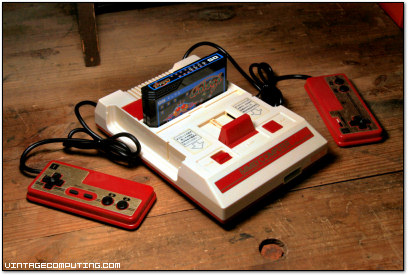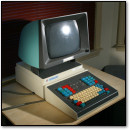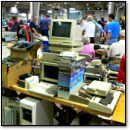Inside the Nintendo Famicom
August 7th, 2008 by Benj Edwards25 years ago, Nintendo entered the home video game system arena with the release of the Family Computer (Famicom) in Japan. You may know the console as the Nintendo Entertainment System, which sold 61.9 million units worldwide in its various forms.
In honor of its anniversary, I took apart an original Famicom and its accessories (including an original Famicom Disk System) while documenting the process on my trusty workbench. You can see the result as a slideshow on PC World.
I had this piece ready to go before July 15th (the actual anniversary date), but it got pre-empted by E3 coverage. I hope you enjoy it, even if it is a tad late.
(If you liked this slideshow, you might also like my previous PC World teardowns of the IBM Model M Keyboard, Apple IIc, and the TRS-80 Model 100.)







August 7th, 2008 at 3:23 pm
This was great!
August 7th, 2008 at 6:36 pm
Your best techopsy to date.
August 7th, 2008 at 7:48 pm
Great article. It was very in-depth, yet simple enough that most ordinary people can understand.
August 8th, 2008 at 3:56 pm
Thanks, guys. I’m very happy that you liked it.
August 8th, 2008 at 4:34 pm
Good stuff. Interesting thing about the mic port on the Famicom which seems to have been overlooked in video game history, but came back in the DS.
Didn’t the Famicom also have an official Nintndo cassette drive for storage? I’d love to hear the sounds of that.
August 9th, 2008 at 12:58 am
AWESOME AWESOME AWESOME!
August 9th, 2008 at 7:00 am
Nice article.
That makes me want to import a famicom… and an adaptor to plug my NES games into it… but I hate hard-wired controllers.
I wonder if one could hack a microphone connection into an NES.
August 10th, 2008 at 5:54 pm
Loved it!
September 2nd, 2008 at 7:01 pm
I actually own one of these and a FDS as well. It’s great, but RF sucks. Unfortunately, getting good A/V out of this thing is a pain as well because if you do get it off of the PPU (good thing), you have to cut the trace giving the signal to the existing amplification hardware. And then you have to invent your own. And I can’t figure out to what degree everything needs to be amplified.